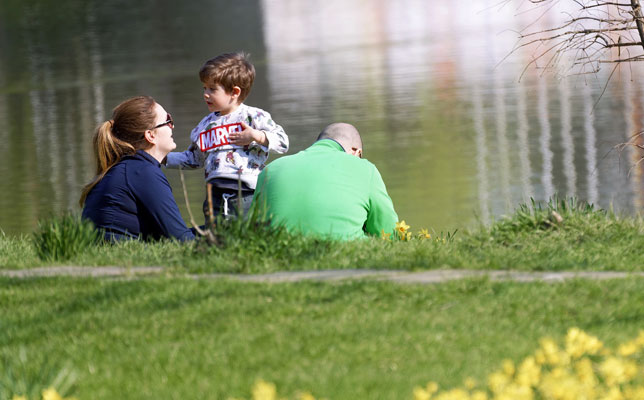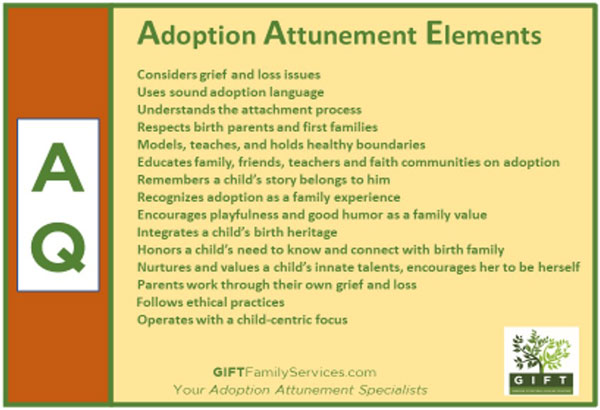This guest post is by Gayle H. Swift, an adoptive mother, adoption coach and author.
Consider the words of Rev David Augsberger: “Being heard is so close to being loved that for the average person they are indistinguishable.”
As adoptive parents and first parents, we have the power to ensure that our children experience the blessing of this deep sense of emotional resonance, of feeling heard and seen in a way that rings true to their core.
When adoptive parents and first/birth parents interact, each will want to strive to understand what the other needs to hear, see, feel and know in order to forge that reality which Augsberger describes.
For our children’s sake, the compass point of both adoptive parents and first parents must be focused on our children. Their emotional and physical health must be the determining factor in the way we interact on this interwoven life journey that is adoption.
At its core, adoption is a relationship affirmed by law and built through agreement, not biology. Its success depends on the love, intentionality, integrity, and commitment of those involved.

The comfort level of the adults must take a back seat to the needs of the child. While this is often not easy or simple to accomplish, it is fundamental to success. Guided by truth and respect, energized by the love for our children, and sustained by our commitment to them, we can achieve a successful open adoption.
When things get tough— and they will— we must reconnect to Augsberger’s words. We must also recognize that this same level of understanding and deep listening also needs to occur between adoptive and birth parents.
Birth parents have to be able to trust adoptive parents to honor their commitment to open adoption. In most states, enforcement of the open adoption agreement is a matter of a moral obligation not a legal one.
Certainly, neither adoptive parent nor birth parent will have their wish list completely met. It is possible, however, to listen to requests, to validate the feelings, and desires that lie beneath them, and to work to be as responsive as possible.
If both sets of parents feel heard and respected, they will be able to work as a team for the benefit of the child whom they all love. If either the adoptive or birth parents feel dismissed, unheard, and/or disrespected, this negativity will damage their ability to work together and will adversely affect their child.
According to Voice for Adoption 95% of adoptions today are “open.” This openness is a spectrum not a binary choice between open and closed.
In fact, open adoptions range from full, physical contact scheduled regularly and fully supported on an emotional level by the adoptive parents, to third party facilitated interactions.
Lori Holden, author of “The Open-hearted Way to Open Adoptions” points out that it is possible to have a high degree of physical openness yet still have a limited degree of emotional openness. The corollary is also possible: low physical contact and high emotional openness.
Full openness in adoption includes not only a physical but also an emotional and psychological space that welcomes the presence of birth parents.
It telegraphs to children their adoptive parents can “handle” their interest, desire and need for knowledge and connection with their birth parents without fear of being judged disloyal to their adoptive parents.
True openness reassures adoptees that it is safe for them to share the full range of their thoughts and emotions with adoptive parents. It welcomes these vital conversations. Openness validates a child’s interest in their roots as a fundamental element with which they will build the scaffolding of a healthy identity.
To be sure, no one will assert that managing an open adoption is easy. Nothing this important in life ever is. Yet it is absolutely worth the effort and determination that it takes to succeed. Whenever we run into a rough patch in our open adoption, we can engage our curiosity to determine what is fueling the difficulty.
Another vital aspect of open adoption often goes unmentioned: being open to letting go of the child of our fantasies and instead to fully open ourselves to appreciate and nurture the person whom our child’s DNA and ancestry has inclined him/her to be.
Whether a child is ours by biology or by adoption, one of the greatest acts of love we can offer them is to appreciate them without boxing them in with our expectations. Such unconditional love allows them to bloom into the full grace of their authentic selves.
Eight guiding questions to Support Open Adoptions
Have I connected with my gut response to assess what is driving my reaction?
Is there any significant reason I cannot agree?
Can any hesitancy that I/we feel be resolved?
Will this benefit our child?
What are my/our HONEST reasons for any disinclination to agree?
If I/we cannot say yes now, can we fulfill the request at some future date?
Can we forge a compromise?
Are we embracing the spirit as well as the essence of Adoption-attunement?

Let us not lose sight of the original, primary purpose of National Adoption Month: to focus on the need to find families for the thousands of foster children awaiting an adoptive family. Every child deserves to grow in the comfort and security of a permanent, loving, safe home. Are you the family they have been seeking?
Gayle H. Swift is a co-founder of GIFT Family Services, and adoption coach, adoptive parent and co-author of three award-winning books: ABC, Adoption & Me, We’re Adopted, so What? And Reimagining Adoption: What Adoptees Seek from Families and Faith.
Do you have an open adoption story? Email us any time or find out more about how to share it with our community.
